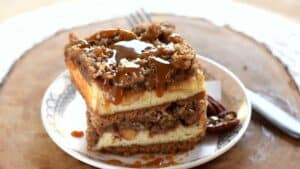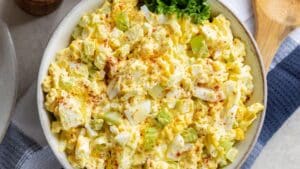There’s something deeply nostalgic almost childishly rebellious about eating dessert for breakfast. But what if you could do it and still tick all the boxes for nutrition, efficiency, and flavor complexity? That’s where Creamy Cinnamon Roll Overnight Oats comes in. This isn’t just another Pinterest-friendly meal prep trend it’s a recipe that has quietly become a morning staple in top-tier cafés, nutrition clinics, and the home kitchens of chefs who don’t mess around with boring breakfasts.
This article unpacks the why, how, and what-the-heck-took-you-so-long of crafting overnight oats that taste exactly like a cinnamon roll without the sugar crash or 400ºF oven. Whether you’re a culinary pro, a meal-prep junkie, or just someone with a 6am call time, we’re diving deep like, steel-cut deep into this creamy, craveable bowl of comfort.
Let’s roll.
What Are Overnight Oats, Really?
To a trained eye, overnight oats are more technique than trend. They’re raw oats usually rolled or steel-cut soaked overnight in a liquid (milk, plant milk, yogurt, or even kefir) to soften and thicken into a pudding-like texture. No stove. No waiting. No burnt pans when you turn your back for one second.
From a food science perspective, overnight oats rely on cold gelatinization. The oats slowly absorb liquid over time, swelling and softening without breaking down like in a hot porridge. This method retains more beta-glucan, a soluble fiber that’s been shown to reduce LDL cholesterol by up to 10% in clinical trials (source: Journal of Nutrition and Metabolism, 2020).
It’s also absurdly versatile. Add-ins? Endless. Flavors? Infinite. But today we’re dialing into a very specific craving cinnamon roll. Think: sticky buns, creamy icing, warm spic but make it breakfast and give it a nutritional halo.
Why Cinnamon Roll Flavor Works So Well in Overnight Oats

Let’s talk about flavor architecture for a sec.
A cinnamon roll is more than just sugar and spice. It’s the interplay of buttery warmth, the slight caramelization of brown sugar, the grounding earthiness of cinnamon bark oil, and that cream cheese tang that hits just enough of the sour spectrum to balance it all out. Translating that into cold oats? Tricky. But 100% doable.
Here’s the core idea: mimic the mouthfeel and flavor layering of a cinnamon roll without baking. To do this, we break it down into components:
- Base: Oats + Greek yogurt + milk (for creaminess and protein)
- Spice: True Ceylon cinnamon (not the cassia stuff more on that later)
- Sweet: Maple syrup or coconut sugar (low glycemic, warm flavor)
- Tang: Cream cheese or a touch of lemon yogurt
- Texture: Chia seeds, toasted pecans, or even oat clusters
- Drizzle: Optional glaze of Greek yogurt + powdered erythritol + vanilla
You’re not making a lazy oatmeal. You’re reverse-engineering a cinnamon bun into a spoonable, chilled, fiber-rich dream.
Ingredients: A Nutritional and Functional Breakdown
Let’s take it apart like a chef would.
1 cup rolled oats
Rolled oats are ideal they soften well without turning mushy like quick oats. Use gluten-free certified if needed. They provide ~10g protein and 8g fiber per cup.
½ cup Greek yogurt (plain, full-fat)
This adds protein (~10g), creaminess, and that subtle tang. It’s also a key player in the “icing” illusion.
½ cup unsweetened almond milk (or dairy milk)
Liquid matters. Almond milk is lighter; dairy milk adds more mouthfeel. For ultra-creamy oats, try a 50/50 blend of almond and full-fat coconut milk.
1 tbsp chia seeds
These aren’t just trendy they thicken the oats naturally and add omega-3s, iron, and plant-based protein. They also act as a binder, like an egg in baked goods.
1–2 tbsp maple syrup or coconut sugar
Low glycemic, with a rich molasses note that echoes brown sugar. Honey works, but it competes with the cinnamon.
1 tsp vanilla extract
More important than people think. It rounds out sweetness and deepens the spice.
1½ tsp ground Ceylon cinnamon
Yes, it matters which cinnamon. Cassia (the usual supermarket stuff) is harsh and one-dimensional. Ceylon is subtle, floral, complex. It makes or breaks this dish.
Pinch of salt
Essential. Don’t skip it. It wakes up the sweet, deepens the cream, and sharpens the spice.
Optional: 2 tbsp whipped cream cheese or vanilla yogurt
This is your “frosting.” Mix into the base or swirl on top. Adds tang, richness, and authenticity.
Toppings: toasted pecans, raisins, granola clusters, yogurt glaze
These are texture bombs. Use them wisely.
The Method: How the Pros Do Overnight Oats
Here’s the expert-level prep strategy:
- Mix the dry stuff first.
Oats, chia, cinnamon, salt get them evenly distributed. Otherwise, chia clumps and cinnamon clogs. - Stir in the wet ingredients slowly.
Add milk first, then yogurt, then sweeteners and extracts. Cream cheese last. This preserves texture and prevents separation. - Refrigerate overnight (minimum 6 hours).
Cover it. Mason jar, deli container, doesn’t matter. Just don’t leave it uncovered unless you like fridge funk. - Before serving, stir again and taste.
Oats absorb unevenly. Give it a good stir in the morning and adjust for sweetness or add a splash more milk. - Top with purpose.
Toasted nuts? Go for it. Yogurt swirl? Yes please. This is not the place for random banana slices unless they’re brûléed or tossed in cinnamon.
Storage, Shelf-Life, and Meal Prep Notes

Overnight oats keep 4–5 days in the fridge, but they peak in quality at 24–48 hours. After that, the texture starts getting too soft. For batch prep, make the base without chia seeds or yogurt until the night before keeps it fresher.
Fun fact: Adding acid (from yogurt or lemon juice) slightly lowers the pH, which can inhibit bacterial growth and extend fridge life naturally. That’s science backing flavor.
Common Mistakes & How Pros Avoid Them
Using quick oats instead of rolled.
They turn into paste. Don’t.
Overloading with sugar.
Cinnamon rolls are sweet, but they’re also balanced. Use spices and natural sweetness instead of dumping honey like you’re Winnie the Pooh.
Skipping salt.
Rookie move. It’s the difference between flat and flavor-bomb.
Wrong cinnamon.
Yes, we’re saying it again. It really matters.
Not letting it sit long enough.
Six hours minimum. Don’t try to rush soak it in 2 hours. You’ll just end up with gritty porridge sadness.
Emerging Trends: Overnight Oats Go Gourmet
In the culinary world, we’re seeing overnight oats elevated with things like:
- Sous vide oat soaking for consistent texture and enzyme breakdown.
- Flavor layering with infused milks (think vanilla bean almond milk).
- Adaptogens like maca or ashwagandha for a functional breakfast.
- Savory crossovers, using miso, tahini, or even mushroom powders don’t knock it ‘til you’ve tried it.
And in the restaurant space? Expect to see “overnight oats flights” with rotating seasonal flavors. Fall: pumpkin spice pecan. Winter: gingerbread molasses. Summer: peaches and cardamom cream.
This isn’t dorm food anymore.
Final Word: Why This Recipe Hits Every Mark
Creamy Cinnamon Roll Overnight Oats might sound indulgent, but done right, it’s a powerhouse breakfast. You’re looking at a meal that hits fiber, protein, healthy fats, and low glycemic index all while tasting like dessert. And unlike a real cinnamon bun, it won’t send your blood sugar into orbit.
If you’re a chef looking to build a grab-and-go menu item? This one sells itself.
If you’re a nutritionist seeking client-friendly recipes? It checks every nutritional box.
If you’re just tired of your boring oatmeal? This’ll fix it.
So go ahead. Make it tonight. Eat it tomorrow. Smile like a person who figured out how to cheat the breakfast system and win.
And don’t forget the good cinnamon. Always the good stuff.









